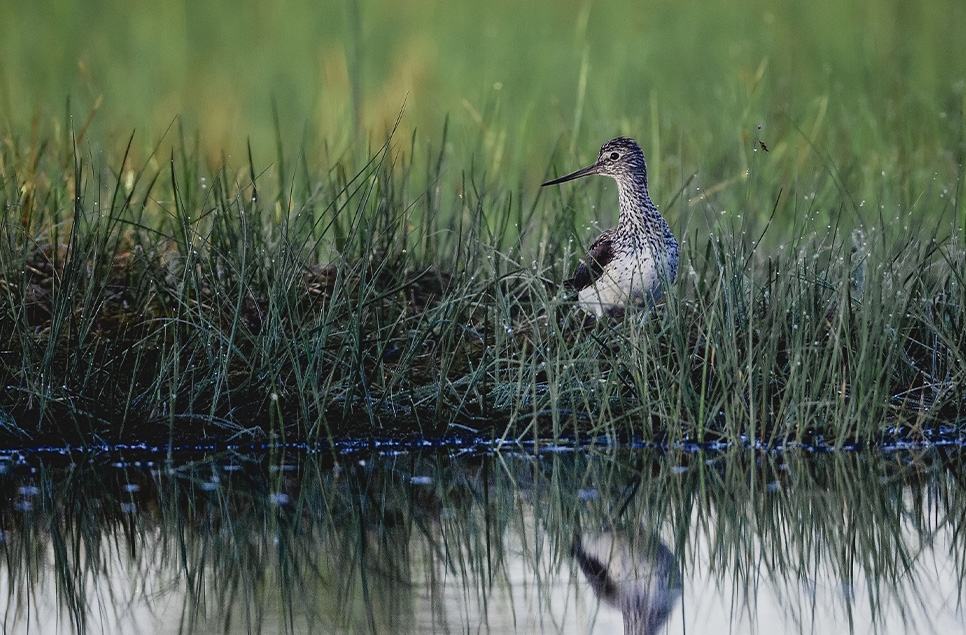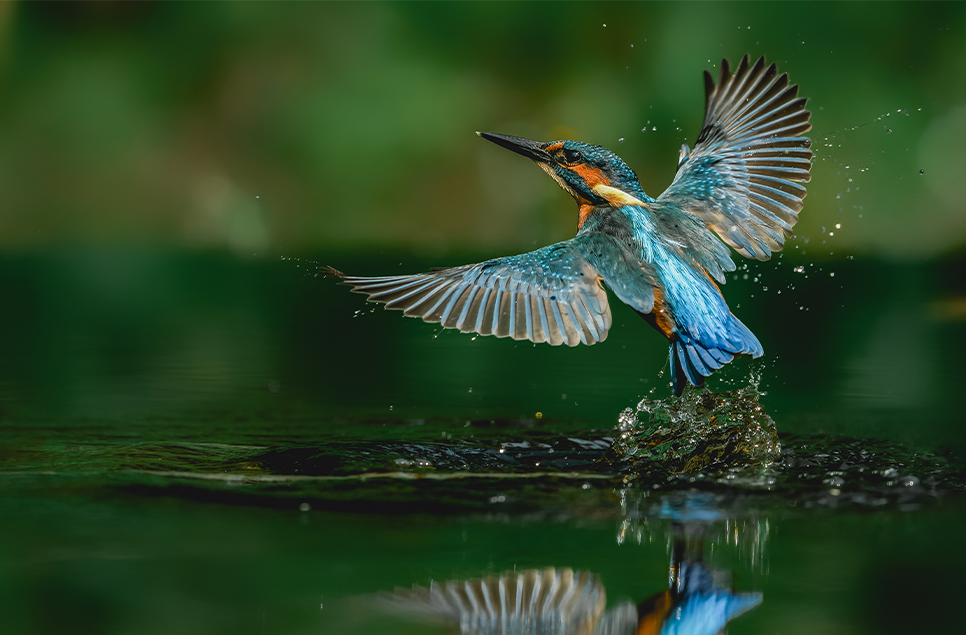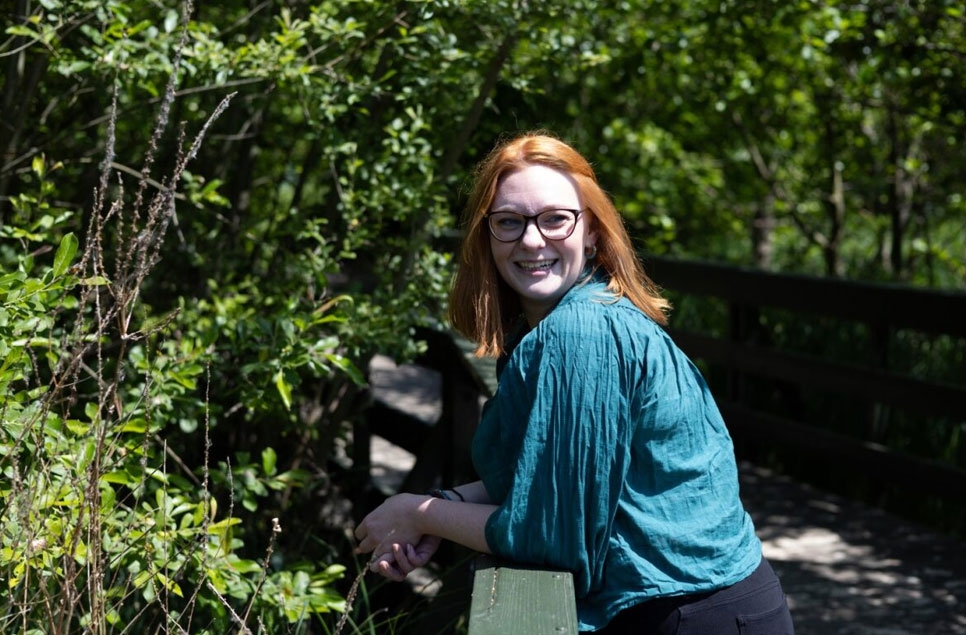A birdwatching code of conduct: How to respect our wetland nature while still getting the most out of your birdwatching experience
We’ve pulled together some useful tips on how to get the most out of your birding, while still protecting and respecting the birds and wetlands you love.
There’s nothing better than getting outdoors in nature and spending time observing our wetland birds. But with many species facing increasing pressure, it’s also our responsibility to make sure we protect them and the wetlands where they live.
We caught up with one of WWT’s very own keen birders, Sam Walker, who works in our content department, to get his tips on how to get the most out of your birding, while still protecting and respecting the birds and wetlands you love.
Bird welfare comes first
When you’re birdwatching, it’s important to remember that the welfare of wildlife and their habitat is paramount. Remember that different species of birds, at different times of year and in different habitats will respond to your presence in different ways so you should always be aware of these factors when considering bird welfare.
This means practising good fieldcraft:
- Keep to the edge of a habitat, or where the birds are used to seeing people
- Wait for the birds to come near to you
- Take into consideration the species and their habitat
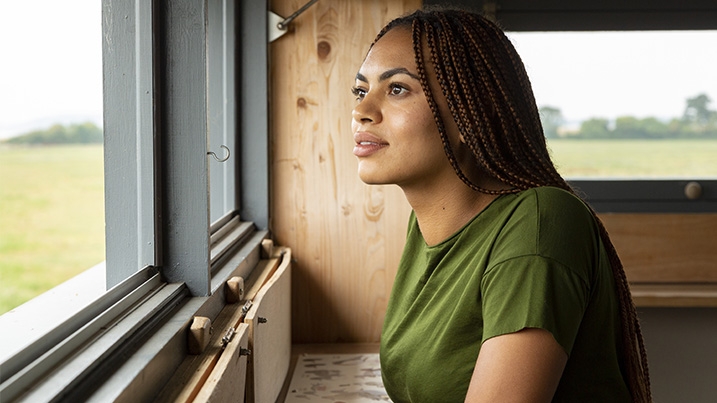
By following these basic rules, you’ll quickly work out how close you can get before you’re in danger of ‘flushing’ the birds.
It will be different on every occasion. In mid-April, you might find you can get to within a few metres of a noisy sedge warbler staking its claim to its chosen willow tree, before you disturb it. But if you’re birding an estuary in December, even your silhouette appearing above the seawall a mile away could flush the feeding waders.
A lot depends on where birds are used to seeing people. Stick to the same viewing points and paths each time and they’ll likely be comfortable.
Through the seasons
During their migrations, birds need wetlands to feed and rest up. They might even be staying in the area for the winter, building up their fat reserves ready for spring migration and breeding. So it’s important they expend as little energy as possible. This means viewing them from a distance when you can.
Birds can easily be disturbed by dogs, especially if they are feeding on a beach or estuary at high tide. If your dog is with you, keep them on a short lead. If there are other dog walkers in the area, politely engage them in conversation and take the chance to note that these birds have flown thousands of miles from arctic breeding grounds to be here to feed up and rest and they shouldn’t let their dog chase them.
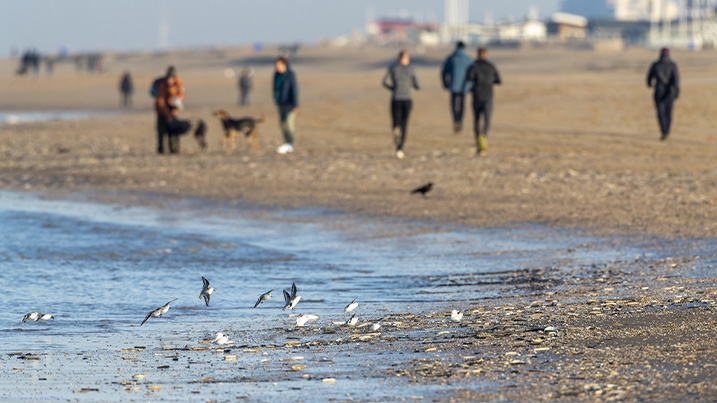
This is also relevant in spring, when ground-nesting birds can be particularly vulnerable to disturbance. If you find a nest while out birdwatching, always keep your distance. Disturbing a nest site is illegal.
By getting too close, you might also draw the attention of nest predators such as crows, which are clever enough to follow humans to bird nests, and ground predators can also follow human-made paths.
Make sure you’re not changing the behaviour of the adults – if they react to your presence by alarm calling or behaving frantically - you are too close and should move back.
Avoid using song playback to encourage birds to show themselves, especially during the breeding season as it can lead to unnecessary stress and energy expenditure for the birds.
It’s also best not to release the location of a nest, as this could lead to it being repeatedly disturbed and cause the birds to abandon it. Instead let your county recorder know the nest location.
Social media likes on your picture isn’t everything
Many of us enjoy posting pictures of birds on our social media channels. But if you’re not carrying out good fieldcraft, getting your ideal image can be at the expense of the bird’s welfare.
This can be especially true for species that we seem to love sharing photographs of, like short-eared owls in flight over saltmarsh, a perched common cuckoo or waders on a shoreline. But if you get too close, or even follow the birds around their open habitat, they’ll soon be gone. You won’t have your picture. The bird will be distressed and you’ll have ruined things for other birders/photographers.
Instead, take things slow. Even if a bird appears particularly tame and approachable, take a moment to watch what it is doing. Is it feeding, resting or singing? Think to yourself “If I get any closer, will it carry on doing that?” As soon as the bird stops behaving naturally, which can be as little as moving away from you, then you’re too close.
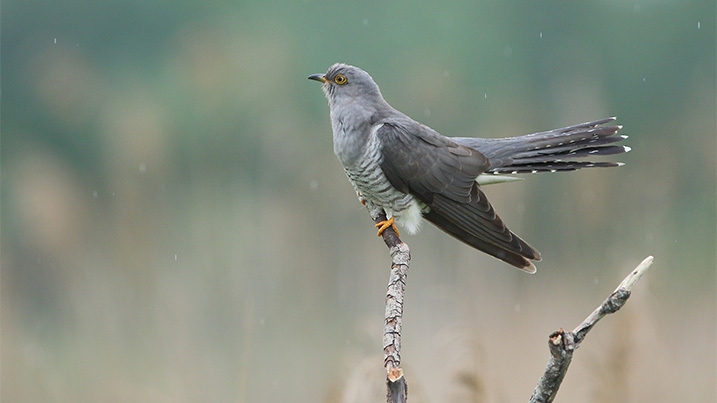
If there are a lot of people watching or photographing a bird then it’s important to ensure good behaviour of the group. Make sure you aren’t surrounding a bird as it can stress it and make it feel there is no safe way to escape. It’s better to make sure everyone stays to just one side.
Never flush anything on purpose to get a better view. It’s detrimental to the bird’s wellbeing and means it’s unlikely to be seen by other birders arriving after you. Instead, use a telescope to keep your distance. It will be more enjoyable to watch the birds behaving naturally.
Protect the habitat and respect privacy
Leave gates as you found them and always stick to the footpath. This is important to avoid disturbing birds or their nests. It also ensures other birdwatchers can enjoy the habitat.
Always get permission before entering private land. Otherwise you might cause a confrontation that could have been easily avoided and end up denying other birders the chance to see a bird. Even worse, you might unwittingly be pushing a landowner to take the decision to blanket restrict access, endangering relationships with bird and other ecological survey work.
Always park sensibly. At a nature reserve, ensure you use designated parking spots. If there’s no carpark, make sure you’re not parked dangerously or blocking people’s driveways. If you’re twitching a rare bird, it can sometimes be tempting to try and park as close as possible. But you’re likely to anger residents or put yourself in danger by parking dangerously. Park properly and take your time.
Help other birders and be an ambassador for birdwatching
Smile and say hello. Share your experiences and support others by telling them what you’ve seen.
A rare bird can be difficult to see, even for experienced birders. So if you’ve got a good view, everyone there will appreciate you voicing where the bird is and how they can find it e.g. “second metal gate in the hedge, come down from that and it’s next to the molehill”.
But tread carefully. Some people might prefer to be left to get on with it on their own.
Share your knowledge
Everyone’s knowledge levels are different. There will always be people with more or less experience than you. So make sure you talk to people and share what you have seen. You might be helping someone or they might be able to help you. This can be especially true if they are young. It might be the first time they have seen birds that you’ve maybe seen hundreds of times and it could be a really formative experience.
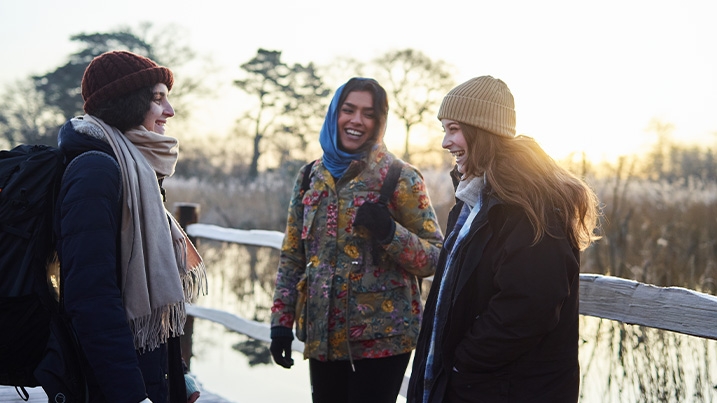
Always take the time to respond to even the simplest questions. You’re an ambassador for birdwatching and just by sharing some information or letting them look through your telescope, you might just spark a lifelong interest in birds.
Find your local wetland centre for your next birdwatching experience.
Plan your visit